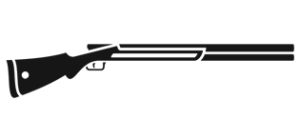clay pi*geon
What Is The Definition Of Clay Pigeon?
A clay pigeon is a type of target used in clay pigeon shooting. It is made from clay and is typically saucer-shaped. Clay shooters use terminology that relates to times past when live-pigeon competitions were held. Although such competitions were made illegal in the United Kingdom in 1921, a target may still be called a “bird,” a hit may be referred to as a “kill,” and a missed target as a “bird away.” The machine which projects the targets is still known as a “trap.”
What Is The History Of Clay Pigeon?
It’s believed the origins of clay pigeons originated around 1875 when they replaced the use of live birds. The replacements were made of asphalt, but the clay target nomenclature stuck. Clay pigeon shooting was popular in England, and even clubs were named to honor the sport in the early 1900s. The British Parliament banned shooting live birds from traps in 1921.
What Does The Clay Pigeon Look Like?
The clay pigeon looks like a disc, shaped like a saucer, or an upside-down plate. The standard size is 100 millimeters in diameter, and it’s composed of limestone and petroleum pitch. They are designed in a way that will allow them to be launched at great speed, yet they’re able to break into pieces when they are shot with a shotgun.
When they are made in the factory, they are black, but they can be painted any color, which helps shooters see them better.
The size and type of clay is dependent on the discipline. Here are some commonly-used clays:
- Standard: This is by far the most commonly-used clay today and weighs in at 105 grams, 100 millimeters in diameter, and 25 millimeters in height.
- Midi: Retains the upside-down saucer shape, but the diameter is 90 millimeters.
- Mini: Commonly referred to as the flying bumblebee, it’s 60 millimeters in diameter. They are harder for shooters to see and sight.
- Battue: Not so much a saucer as a thin wafer; it’s 100 millimeters in diameter.
- Rabbit: This is a tough target for shooters because it rolls along the ground, and the speed makes it seem faster than it is, making people focus ahead of the target.
Examples Of How Clay Pigeon Is Used In Commentary
1. Many people love to shoot sporting clay pigeons, but rabbit targets are commonly missed because they roll along the ground, appearing to go faster than it actually is. The tendency is for people shoot ahead of the target, not behind it.